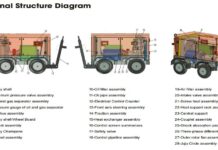Choosing the right roofing material is crucial for homeowners looking to balance aesthetics, functionality, and budget. In this comparison of metal roofs and shingle roofs, we’ll explore the pros and cons of each to help you make an informed decision.
Key Benefits of Metal Roofs: Durability and Longevity
Metal roofs are celebrated for their durability and longevity. Typically made from steel, aluminum, or copper, metal roofs can withstand harsh weather conditions like heavy snow, hail, and extreme temperatures. They are also fire-resistant and can last up to 50 years or more with minimal maintenance, making them an excellent long-term investment.
The Advantages of Shingle Roofs: Cost-Effectiveness and Style
Shingle roofs, on the other hand, are favored for their cost-effectiveness and visual appeal. Asphalt shingles, the most common type, are available in various colors and styles that can complement any home design. They are significantly cheaper than metal roofs both in terms of materials and installation. For homeowners looking for an affordable and attractive roofing option, shingle roofs are often the preferred choice.
Metal vs Shingle Roofs: Comparing Weather Resistance
When it comes to weather resistance, metal roofs generally offer superior protection. They are practically impervious to rain and snow, as their smooth surfaces shed water and snow quickly. Shingle roofs can also protect against weather elements, but they are more prone to damage from severe storms and may develop leaks or lose shingles over time.
Maintenance and Care: Metal Roofs vs Shingle Roofs
Maintenance is another area where metal roofs excel. They require little upkeep beyond occasional cleaning and inspections to ensure no screws have become loose. Shingle roofs, while low maintenance, may need more frequent inspections and repairs, especially after stormy weather, to replace damaged or missing shingles.
Installation Process: What’s Different Between Metal and Shingle Roofs?
The installation of metal roofs can be more complex and time-consuming than shingle roofs. Metal roofing materials are larger and require special tools and expertise, often leading to higher labor costs. Shingle roofs are easier and quicker to install, which can be a significant advantage for homeowners needing a new roof in a short timeframe.
Cost Analysis: Metal Roof vs Shingle Roofs Initial and Long-Term Expenses
Initially, metal roofs are more expensive than shingle roofs. However, considering their longer lifespan and minimal maintenance requirements, metal roofs may be more cost-effective in the long run. Shingle roofs, while less expensive upfront, typically need to be replaced every 15 to 30 years. Homeowners should consider both initial and long-term costs when choosing their roofing materials.
Environmental Impact: Which Roofing Material is More Eco-Friendly?
Metal roofs are often made from recycled materials and are 100% recyclable at the end of their life, making them an eco-friendly option. They also reflect solar radiant heat, which can reduce cooling costs and energy use. Asphalt shingles are less sustainable, as they are a petroleum product and the majority end up in landfills at the end of their lifecycle.
The Lifespan of Metal vs Shingle Roofs: What to Expect
The lifespan of a roofing material is a crucial consideration. Metal roofs can last 40 to 70 years, depending on the material. Shingle roofs have a shorter lifespan, typically 15 to 30 years. The longevity of both types can be influenced by the climate, maintenance, and installation quality.
Final Thoughts: Choosing the Right Roofing Material for Your Home
Selecting the right roofing material involves weighing factors like cost, durability, maintenance, and aesthetic preference. Metal roofs offer longevity and resilience, making them ideal for homeowners who want a long-lasting solution. Shingle roofs are suitable for those seeking a cost-effective, attractive option with a variety of design choices. Ultimately, the best choice depends on your specific needs, budget, and long-term plans for your home.





























